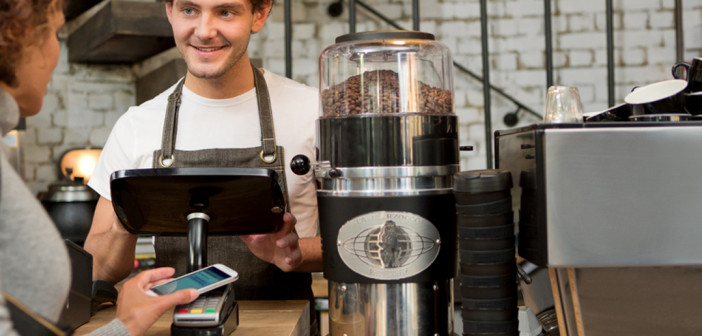By Ralf Ohlhausen, business development director, PPRO Group
Like many others, I am eschewing my physical wallet and using my phone as a ‘hub’ to pay for everything I need in my busy 21st century life. Let me outline my typical day. Wake up, go to the gym and buy a banana on my way out with Apple Pay; go to the petrol station and fill up the car by paying with my Shell Fill up and Go app; go to Starbucks and grab a caramel latte, using its customer app to pay for it; travel to the office and park in the nearest car park, paying with my RingGo app.
However, it doesn’t just stop here. After sitting at my desk and doing some work I will pop out to pick up my lunch from Tesco using my PayQwiq app; go back to the office for a series of meetings; buy my wife a birthday present on Amazon and pay through PayPal; then return home to take my family to Zizzi’s for dinner and pay for our meal with the QKR! app.
Culture of convenience
We are currently living in a culture of convenience, and with conflicting demands and increasingly busy lifestyles, consumers are seeking greater convenience in their shopping mission. Mobile payments are answering consumers’ hunger for convenience and it is predicted that by 2025, 65% of all transactions are to be by mobile phone [Co-Op/Atomik research 2016]. With this in mind, we are seeing big brands and retailers increasingly embracing mobile payment apps to offer their customers, not just for their convenience, but to help foster their loyalty.
To add to this, Edgar, Dunn & Company [2016] revealed that 74% of respondents believe large retailers will continue to move away from traditional POS terminals to mobile ones.
Brands and retailers clearly need to prepare for mobile payments but there is one factor we have to be mindful of. Unless there is a consolidation, we will soon find ourselves with too many different apps on our phones, which will undoubtedly lead to consumer confusion. Can you imagine the frustration caused in the queue as a less tech savvy customer feverishly scrolls through their apps to find the right one? In addition to this, many mobile devices will be unable to hold the deluge of apps you download, should every one of your favourite stores and restaurants introduce them.
Easy to use tech
Whilst a retailer’s app should be built upon the foundation of easy to use payment technology to keep their customers intrigued and continue to use it, the app needs to provide further benefits, whether that is the ability to collect loyalty points upon purchase, visibility on upcoming deals or even perhaps targeted marketing whereby the customer will be presented with similar goods or services they have recently bought.
The UK retail landscape is changing, and the disruptive impact of technology is empowering customers and heightening their expectations of how retailers will serve them in the future. There will understandably be challenges that retailers will need to overcome but the benefits of an optimum mobile payments mix are clear.
Those retailers that get it right will be the ones that incentivise customers through the likes of loyalty points and special offers; and underpin their apps with one of the emerging mobile payment platforms that are gathering popularity, whether it be Android Pay, Apple Pay or Samsung Pay.
PPRO is a full-service partner for PSPs and payment providers in the e-payment environment as well as an e-money specialist for corporates and consumers.





